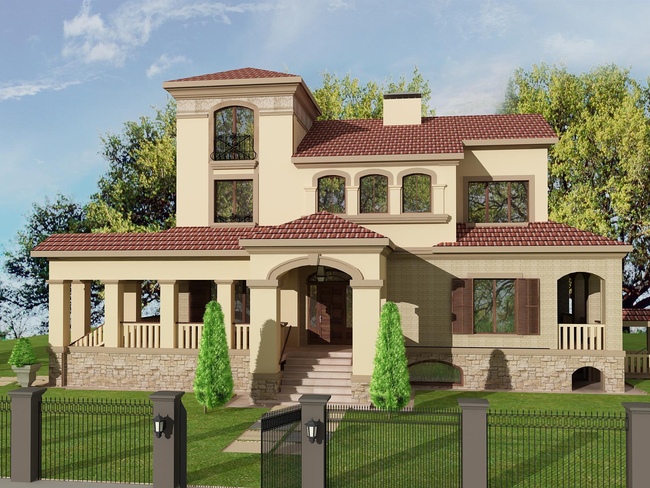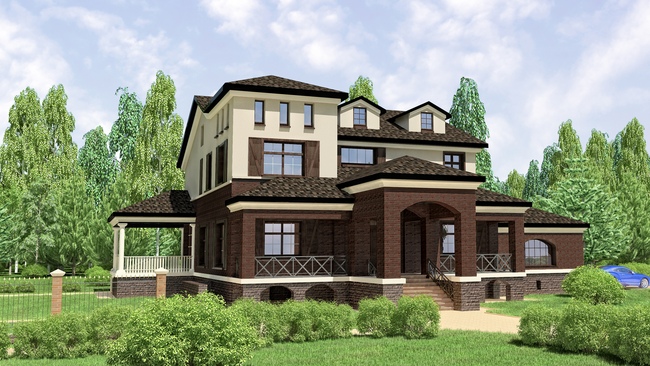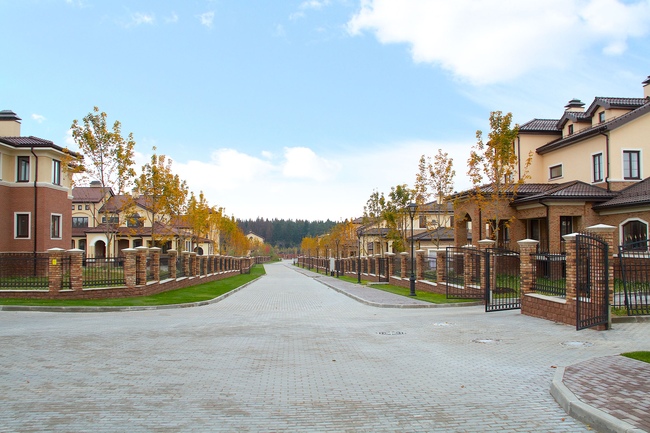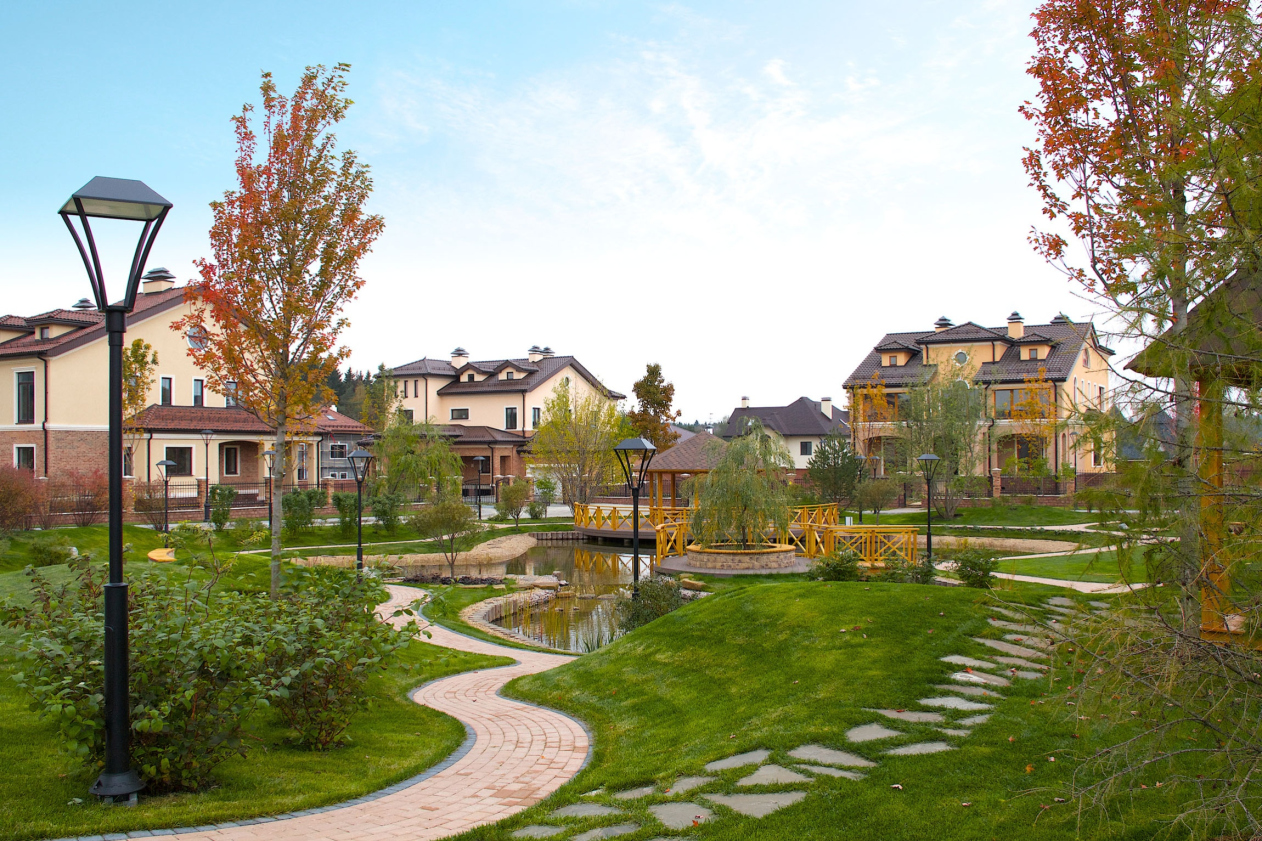The
settlement, located
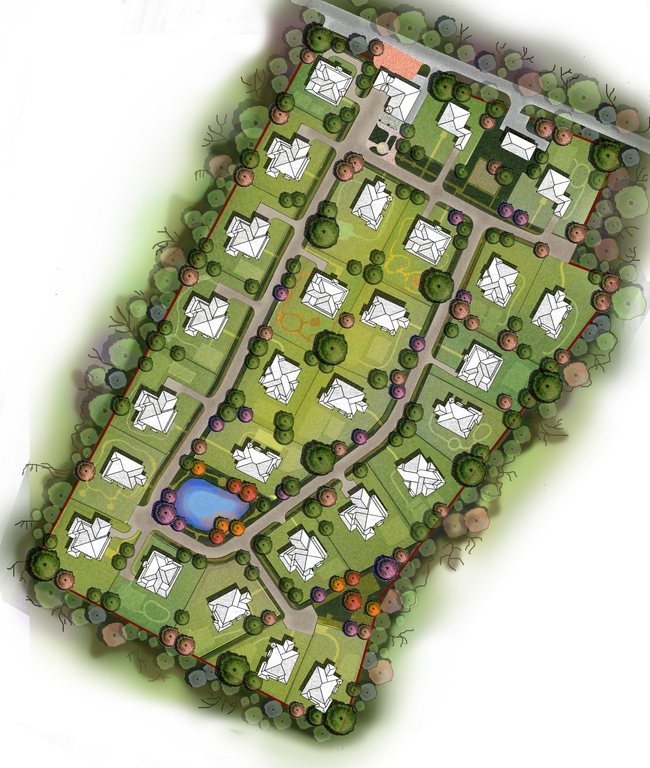
The
work on the reconstruction project started from reconsidering the master plan.
On the layout, the territory of the settlement looks like an elongated
rectangle, one of its narrow sides adjoining the highway. Its central part is
described by the smooth loop of the central road, along the inner and outer
perimeter of which the houses stand. The challenging part was the fact that the
houses were placed more than freely - in fact, the whole settlement was
"cut" into private property plots, so no landscaping of the territory
was planned, let alone creation of some public area. The architects moved one
house closer to the edge of the settlement - thus in the base of the loop there
appeared a free space that was used for the creation of a man-made creek,
"bound" with walkways and picturesque bridges. And, even though this
creek is located not in the exact center of the settlement but closer to its
farther boundary, it doubtlessly becomes the settlement's centerpiece and the
free space that defines the image of the settlement giving its inhabitants the
opportunity to go for walks inside of it. The architects corrected the plans of
the estates as well, giving them ostentatiously different shapes, which brought
some extra diversity into the settlement's panoramas.
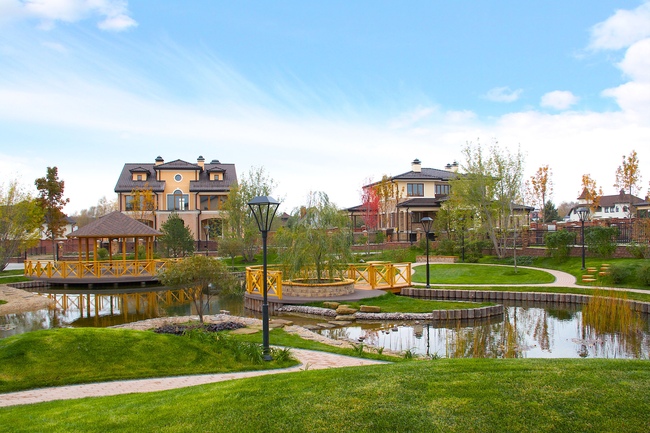
Totally,
24 houses were to be reconstructed - which included changing their square
footage and the color solutions as well. Here the architects also found
themselves in very cramped conditions - they were to use the already existing
basements and bearing walls, in fact, "dressing" the existing
framework into a new shell. In every case the reconstruction was performed at
the expense of complete dismantling the roof and the second floor as well - at
some places it helped decrease the overall area of the cottage, and at some
places it helped, on the other hand, increase it by adding an attic floor to
the two-story volume.
"Only
a few years ago I was the biggest advocate of the mono-style architectural
solution for the cottages within the framework of one settlement; it seemed
really important to me that I should create the well-balanced environment with
a unified style of its own, - Aleksey Ivanov shares - Now, however, that the
market is over-saturated with offers of such kind, it makes more sense to offer
the buyer a small but diverse environment to live in. The diversity of
architectural solutions lowers the risks of the reign of subjective taste at
the same time widening the circle of your potential buyers". Speaking
about "diversity"' though, the architect means, of course, not the
entire range of all possible solutions one can think of, but a sure-fire
combination of two or three most popular ones…
In
this particular case, the architects made the settlement unite two styles: as
one of the two prototypes, the architecture of Tuscan renaissance was chosen;
the second source of inspiration was Wright's "prairie house style",
the world's universal commercial success. Conditionally speaking, the
settlement got houses that were more on the up-to-date side and the houses more
in the European tradition that will be closer to those who are into Old Mother
Europe. "What is really important to me is the fact that both of these
solutions can be described as chaste, good quality, and they go well together,
complementing each other" - the architect explains his choice.
Within
the bounds of each "style" the architects developed 5-6 types of
houses, different not only in square footage, layout, the garage, and the
terrace area but also different in the set of decorative design solutions. The
houses that Aleksey Ivanov calls "Tuscan" got open galleries on stone
pillars, and flattened arches. As well as round windows and Palladian
(Serliana) windows - rectangular openings with an arch on top in the middle,
first described by the architect of the XVI century Sebastiano Serlio and named
after him. "The attractiveness and the presentability of these houses is
enhanced by massive walls and the solemn entry portal, the use of natural
materials and the soft natural shades of color, which gives us the right to
completely forego the idea of decorating for the sake of decorating and not
follow the trend blindly in this sense", - the architect says.
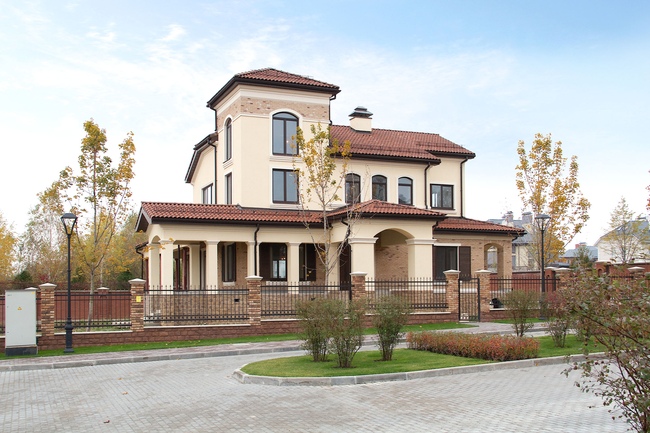
In
accordance with the Italian theme, the entrance part got a steeple-like square
bell tower.
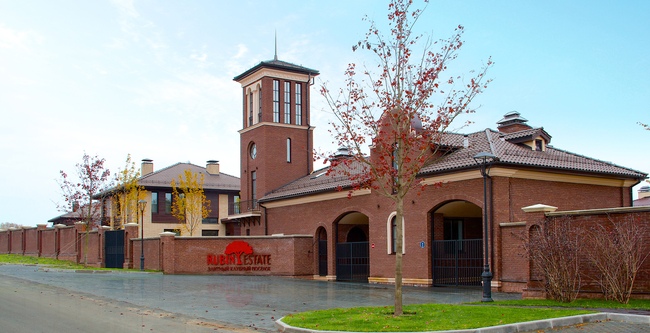
The
second part of the projects that pays homage to the memory of "prairie
house" style, lays stress on the horizontal rather than the vertical. A
little bit more gently sloping and far protruding pitches of the tile roofs, as
well as the more dramatic combination of white stucco and dark bricks are the
characteristic traits of this group of projects.
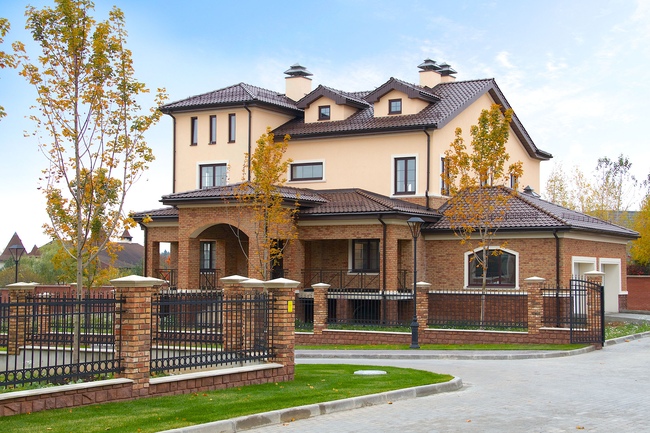
Placing
their bets on the theme of reminiscing about two historical epochs let the
architects achieve the diversity that they were after. Behind the openwork fences,
there is an alternating array of galleries and arched porches, and the dark and
the traditionally red bricks. The houses are turned to the observer at
different angles, and their silhouettes, sometimes modest and sometimes fancy
with the towers, keep one's eyes from getting weary. The conservative structure
of bricks and stucco, the large but not grotesque windows in the conservative
light-shaded frames, the balanced proportions of the volumes - all this creates
the feel of reliability and comfort, while the creek and the mini-park make the
space of the settlement look a little more friendly and attractive. All this,
coupled with a rather large "fork" in the area of the houses - 450 to
